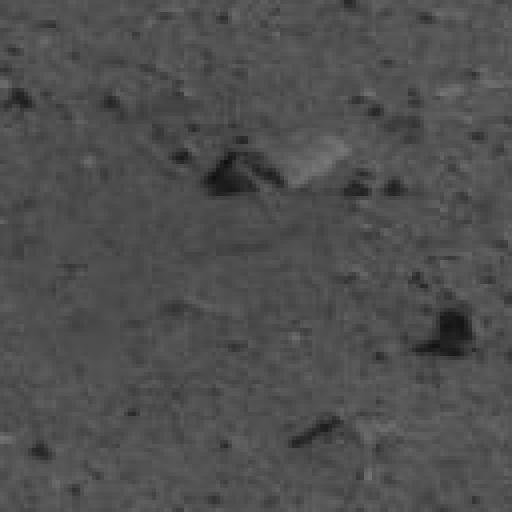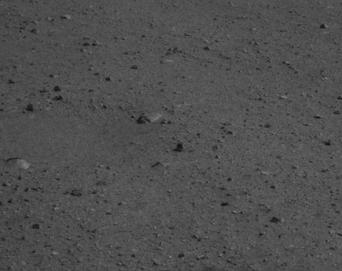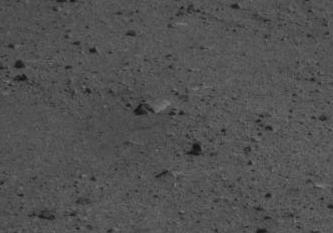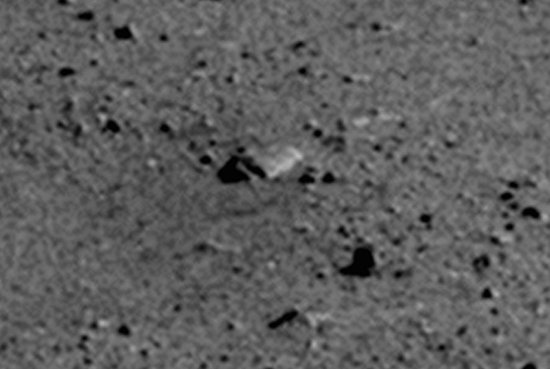It looks like you're using an Ad Blocker.
Please white-list or disable AboveTopSecret.com in your ad-blocking tool.
Thank you.
Some features of ATS will be disabled while you continue to use an ad-blocker.
share:
Originally posted by thiefriverfalls
reply to post by AmberLeaf
. i see a cylindrical rock casting a shadow. rock. ROOOOOOOOOOOOOOOCK. lol
I think the argument is that Nothing can produce a perfect Circle from its shadow unless it was a hole.
That being the case .. then its quite possible that what we see is some gas off of some kind that produced 'holes'.
Its also not that far fetched that we can see some kind of formation that happened a long time ago.
Its Mars .. loads of history is what we are trying to objectify.
Get me a pic of some molten Steel or crumpled up buildings and I will bite. Somehow some small pics blown up 100x is not gonna do it for me.
That rover has an autoclave .. sample to the smallest sample.
Mars is mars man .. its dead and it has been dead for a long time.
JG.
reply to post by senselessness
Using your "correct" scale I can still see the hole.

Nothing has changed. Just more pixelation. But you would have to be blind or in denial not to see all the debatable points are still visible.
Using your "correct" scale I can still see the hole.

Nothing has changed. Just more pixelation. But you would have to be blind or in denial not to see all the debatable points are still visible.
Mmmm.... I think it's too much of a stretch. I don't think it's anything. Lets have a picture with clarity that has something in it, anything
non-organic, being made, but this stuff, just don't work for me.
I see a rock. a rock that has a shadow blocking out a lot of detail.This is just another picture that shows nothing again.Someday they will find proof
of llive on another planet but not today.
reply to post by FlySolo
What on Earth are you talking about?
I am trying to explain to you that the "things" you think you see in the image are not actually in the image. Not only is there visible compression in the RAW images, but when you "zoom / scale / resize" the image with the methods you are using, you are turning these compression artifacts into things they are not, and you are creating illusions of things that don't exist.
You are manipulating the image, and saying it is something it is not... it's quite simple.
---
To further explain, because you obviously don't get it, here is another example...
Here is a 64x64 image with 12 colored pixels in the middle. Imagine these pixels are straight from a camera.

Here is the WRONG way to "zoom" the image using Bilinear interpolation:

As you see, those 12 simple pixels have been blended, smoothed, etc.. now each pixel was turned into 14x14 gradients that contain information that was never in the original image! Now there is 2,352 colored pixels that never existed. The image is completely computer generated.
Now here is the CORRECT way to "zoom" the image using Nearest-Neighbor interpolation also known as "pixel resize"...

As you can see, the 12 colored pixels are untouched. The original data from the "camera" is unchanged. Each of the pixels were only increased in size, and there are now twelve 8x8 solid squares that represent each original pixel.
Do you understand now??
What YOU are doing is incorrectly scaling or "zooming" the Mars images, and then trying to claim the artifacts in the resulting incorrect images are unnatural objects.
They are unnatural because YOU are unnaturally and incorrectly scaling the image that has preexisting compression, and it is artificially changing the shadows and lighting, creating an illusion.
It's just rocks...
What on Earth are you talking about?
I am trying to explain to you that the "things" you think you see in the image are not actually in the image. Not only is there visible compression in the RAW images, but when you "zoom / scale / resize" the image with the methods you are using, you are turning these compression artifacts into things they are not, and you are creating illusions of things that don't exist.
You are manipulating the image, and saying it is something it is not... it's quite simple.
---
To further explain, because you obviously don't get it, here is another example...
Here is a 64x64 image with 12 colored pixels in the middle. Imagine these pixels are straight from a camera.

Here is the WRONG way to "zoom" the image using Bilinear interpolation:

As you see, those 12 simple pixels have been blended, smoothed, etc.. now each pixel was turned into 14x14 gradients that contain information that was never in the original image! Now there is 2,352 colored pixels that never existed. The image is completely computer generated.
Now here is the CORRECT way to "zoom" the image using Nearest-Neighbor interpolation also known as "pixel resize"...

As you can see, the 12 colored pixels are untouched. The original data from the "camera" is unchanged. Each of the pixels were only increased in size, and there are now twelve 8x8 solid squares that represent each original pixel.
Do you understand now??
What YOU are doing is incorrectly scaling or "zooming" the Mars images, and then trying to claim the artifacts in the resulting incorrect images are unnatural objects.
They are unnatural because YOU are unnaturally and incorrectly scaling the image that has preexisting compression, and it is artificially changing the shadows and lighting, creating an illusion.
It's just rocks...
edit on 1-9-2012 by senselessness because: (no reason given)
reply to post by FlySolo
Sorry, you have to be incredibly ignorant to think a dark area can only be a hole, and not just a shadow. You are looking at a greyscale 2D image, how do you know it is a hole and not a shadow? Oh that's right, you don't know.
Sorry, you have to be incredibly ignorant to think a dark area can only be a hole, and not just a shadow. You are looking at a greyscale 2D image, how do you know it is a hole and not a shadow? Oh that's right, you don't know.
edit on 1-9-2012 by senselessness because: (no reason given)
reply to post by senselessness
So that would mean you dont know either, and are guessing based on what you think you know.
Its probably time for you to depart, you have made you points. Not everyone is buying "its a rock" "its a shadow" "its the software"
Or find another "rock" that looks the same from this mission and post it. It shouldnt be hard with all the image anomalies, dust, shadows and the like. You say its a rock, i say its not.
So that would mean you dont know either, and are guessing based on what you think you know.
Its probably time for you to depart, you have made you points. Not everyone is buying "its a rock" "its a shadow" "its the software"
Or find another "rock" that looks the same from this mission and post it. It shouldnt be hard with all the image anomalies, dust, shadows and the like. You say its a rock, i say its not.
Originally posted by senselessness
reply to post by AmberLeaf
I am a software engineer, and I have written custom interpolation algorithms, and also implemented well documented interpolation algorithms, and even created image averaging algorithms for custom applications.
None of the images you have shown in this topic were scaled using nearest-neighbor interpolation, and instead, were scaled using other forms of interpolation. That means the images you are looking at are completely computer generated. Any details you think you see in the images are potentially non-existent in reality.
Unless you have 10 or more images of the same area, stabilized them all so they are all aligned, and then averaged each pixel of every image together, you will never get more detail. Even then, with image averaging you don't get a whole lot of extra detail. Image averaging removes noise, and that reduced noise clarifies edges and certain details because it reduces the signal to noise ratio (SNR), but not by very much.
edit on 1-9-2012 by senselessness because: (no reason given)
Even worse I bet the jpeg image is being zoomed into.......with all those lovely jpeg artifacts creating artificial horizontal and vertical lines, which cannot be natural so it must be martians!
reply to post by AmberLeaf
Actually... I know it is just a rock.
It's pretty idiotic to think it is anything else. Even more idiotic is putting it in the "Aliens and UFOs" forum because this is not an alien nor a UFO.
These stupid topics pop-up all over the web every so often because people with next to no lives what-so-ever stare at these images for hours and hours until their brain's pattern recognition goes crazy, and their sanity is lost.
This topic reminds me of a man stranded in the middle of Death Valley, near death, who lost his sanity, and starts thinking rocks are alive and moving because he has been looking at them for days.
I'll gladly leave this topic now... I'm not insane enough to continue to stare at rocks and claim they are Aliens and UFOs.
Actually... I know it is just a rock.
It's pretty idiotic to think it is anything else. Even more idiotic is putting it in the "Aliens and UFOs" forum because this is not an alien nor a UFO.
These stupid topics pop-up all over the web every so often because people with next to no lives what-so-ever stare at these images for hours and hours until their brain's pattern recognition goes crazy, and their sanity is lost.
This topic reminds me of a man stranded in the middle of Death Valley, near death, who lost his sanity, and starts thinking rocks are alive and moving because he has been looking at them for days.
I'll gladly leave this topic now... I'm not insane enough to continue to stare at rocks and claim they are Aliens and UFOs.
edit on 1-9-2012
by senselessness because: (no reason given)
reply to post by AmberLeaf
Nice catch! Is it just me, these pix's from the rover curiosity site really don't look as sharp as what I've seen with rover opportunity & spirit... I hope it's just an adjustment...
Here's my two favorite mars pixs from opportunity & spirit with skulls...
1. marsrover.nasa.gov...
Below and to the left, you will see what looks like a skull, maybe a bury body with head sticking out.
2. marsrover.nasa.gov...
Top left looks like to skulls...
Nice catch! Is it just me, these pix's from the rover curiosity site really don't look as sharp as what I've seen with rover opportunity & spirit... I hope it's just an adjustment...
Here's my two favorite mars pixs from opportunity & spirit with skulls...
1. marsrover.nasa.gov...
Below and to the left, you will see what looks like a skull, maybe a bury body with head sticking out.
2. marsrover.nasa.gov...
Top left looks like to skulls...
reply to post by senselessness
I do get it, it's happening each time as you expand a picture. It uses algorithms to fill in pixels and simple interpolation schemes use straight pixelation replication. But what you're not getting is, there is a limit before straight pixelation replication occurs and what ever your looking at becomes distorted beyond repair. As I tried to point out here:
www.abovetopsecret.com...
While yours and Phage's argument is, without a sophisticated interpolation algorithm, it's going to be junk. As it turns out, Windows picture viewer doesn't use straight pixelation but actually does work on a more sophisticated level.
I am trying to explain to you that the "things" you think you see in the image are not actually in the image. Not only is there visible compression in the RAW images, but when you "zoom / scale / resize" the image with the methods you are using, you are turning these compression artifacts into things they are not, and you are creating illusions of things that don't exist.
I do get it, it's happening each time as you expand a picture. It uses algorithms to fill in pixels and simple interpolation schemes use straight pixelation replication. But what you're not getting is, there is a limit before straight pixelation replication occurs and what ever your looking at becomes distorted beyond repair. As I tried to point out here:
www.abovetopsecret.com...
While yours and Phage's argument is, without a sophisticated interpolation algorithm, it's going to be junk. As it turns out, Windows picture viewer doesn't use straight pixelation but actually does work on a more sophisticated level.
More sophisticated interpolation schemes try to make a better guess at what would be in those extra pixels if they had been present in the original image. This tends to involve deriving a mathematical function which matches the original image, and then using that function to fill in the blanks. Biiinear and bicubic interpolation are the most common. As it happens, Windows Picture and Fax Viewer does use interpolation. (At least it does on Windows XP - what are you using?) Not sure whether it's bilinear, bicubic or something else, but it's definitely not doing straight pixel replication.
Originally posted by senselessness
reply to post by FlySolo
Sorry, you have to be incredibly ignorant to think a dark area can only be a hole, and not just a shadow. You are looking at a greyscale 2D image, how do you know it is a hole and not a shadow? Oh that's right, you don't know.
edit on 1-9-2012 by senselessness because: (no reason given)
You should go back and read this thread before talking like a know-it-all. I already covered this last night.
reply to post by FlySolo
No. All interpolation except pixel reproduction produces "junk". All resizing algorithms, no matter how "sophisticated" (except pixel reproduction) just "guess" at what is between the pixels, they just use different guessing methods. No resizing algorithm can produce detail which is not in the original image. Resizing beyond the native resolution will not provide a "close up" view and the more the image is "zoomed" the more "guessing" is used and the less accurate the image becomes.
No. Interpolation begins as soon as you "zoom" beyond the native resolution of the image. The type of distortion of the original data depends on the type of interpolation. A pixel resize does not "add" any information, any other algorithm does.
But what you're not getting is, there is a limit before straight pixelation replication occurs and what ever your looking at becomes distorted beyond repair.
While yours and Phage's argument is, without a sophisticated interpolation algorithm, it's going to be junk. As it turns out, Windows picture viewer doesn't use straight pixelation but actually does work on a more sophisticated level.
No. All interpolation except pixel reproduction produces "junk". All resizing algorithms, no matter how "sophisticated" (except pixel reproduction) just "guess" at what is between the pixels, they just use different guessing methods. No resizing algorithm can produce detail which is not in the original image. Resizing beyond the native resolution will not provide a "close up" view and the more the image is "zoomed" the more "guessing" is used and the less accurate the image becomes.
edit on 9/1/2012 by Phage because: (no reason given)
Go the the Nasa Curiosity homepage. What does it say? Curiosity: Could Mars Have Once Harbored Life?
Evidence of life of Mars is exactly what Nasa is looking for! They want the same thing that we all do!
So why, please tell me, aren't Nasa at all excited about the "rock" in the photo?
I'm speculating that some of the people who post on here would dismiss Curiosity discovering some real evidence - they would probably start a new thread suggesting that Nasa fabricated the evidence to make themselves look good!
I'd just like to add, I'm not a cynic. I've seen a flying disc back in 1996 that totally blew my mind. I want Curiosity to find evidence of life on Mars. I believe Bigfoot exists. I love everything to do with aliens, cryptids, ghosts etc. I'm just getting a bit fed up of the collection of "HEY! ROCKS RESEMBLE OTHER STUFF!" threads.
Evidence of life of Mars is exactly what Nasa is looking for! They want the same thing that we all do!
So why, please tell me, aren't Nasa at all excited about the "rock" in the photo?
I'm speculating that some of the people who post on here would dismiss Curiosity discovering some real evidence - they would probably start a new thread suggesting that Nasa fabricated the evidence to make themselves look good!
I'd just like to add, I'm not a cynic. I've seen a flying disc back in 1996 that totally blew my mind. I want Curiosity to find evidence of life on Mars. I believe Bigfoot exists. I love everything to do with aliens, cryptids, ghosts etc. I'm just getting a bit fed up of the collection of "HEY! ROCKS RESEMBLE OTHER STUFF!" threads.
How far has the Rover traveled so far? A few hundred feet? And it already found signs of life? That would indicate that there is life all over the
planet. I'm not a mathematician, but what are the odds that we landed within a few hundred feet (hell, or even miles!) of a sign of life? To land on
ENTIRE planet and find this right away, sorry, that seems to indicate that there would be life everywhere. I don't think so, or we'd have seen it
sooner.
I look at the pictures and cannot see anything that can be misconstrued as anything other than a freaking rock. Imagination and the power of suggestion is a POWERFUL thing.
snrRog
I look at the pictures and cannot see anything that can be misconstrued as anything other than a freaking rock. Imagination and the power of suggestion is a POWERFUL thing.
snrRog
Mars must be made of Swiss cheese.
Originally posted by FlySolo
reply to post by senselessness
No one is saying interpolation doesn't happen, just at what point?
Is it happening here?
Or is it happening here?
How about now?
Would you feel safe to say it's not? All three pictures have the same detail and hasn't changed at all.edit on 1-9-2012 by FlySolo because: (no reason given)
Look at your last pic.
If your 'hole' is a hole, then all those other black spots must be holes also.
Martian gophers?
reply to post by FlySolo
Now that quote right there is definitely Pareidolia I'm sorry to say. The real question is if that image with the correct interpolation method had been shown first would you still have seen the item as anomalous, and not whether you can still see the anomalous areas now. Of course you can see the anomalous aeas you are preconditioned to look for the same configuration you saw in the incorrectly altered picture.
I'm really struggling to try and explain this as well as I want to but at the end of the day this all comes down to humans wanting to see patterns where there are none.
I'd love for us to find some sort of artifacts on the surface of Mars I really would, but that doesn't mean I'm going to jump on the bandwagon and just support this when it's pretty plainly not a wire or a helmet or etc.
Using your "correct" scale I can still see the hole. Nothing has changed. Just more pixelation. But you would have to be blind or in denial not to see all the debatable points are still visible.
Now that quote right there is definitely Pareidolia I'm sorry to say. The real question is if that image with the correct interpolation method had been shown first would you still have seen the item as anomalous, and not whether you can still see the anomalous areas now. Of course you can see the anomalous aeas you are preconditioned to look for the same configuration you saw in the incorrectly altered picture.
I'm really struggling to try and explain this as well as I want to but at the end of the day this all comes down to humans wanting to see patterns where there are none.
I'd love for us to find some sort of artifacts on the surface of Mars I really would, but that doesn't mean I'm going to jump on the bandwagon and just support this when it's pretty plainly not a wire or a helmet or etc.
new topics
-
Steering the Titantic from the Drydock.
US Political Madness: 22 minutes ago -
Paramilitary Leaks - John Williams
Whistle Blowers and Leaked Documents: 9 hours ago -
Some sausage, some chicken, some sauce, some onions and some garlic...and some peppers!
Food and Cooking: 10 hours ago -
Hearing more ambulances lately
Medical Issues & Conspiracies: 11 hours ago -
Los Angeles brush fires latest: 2 blazes threaten structures, prompt evacuations
Mainstream News: 11 hours ago
top topics
-
House Passes Laken Riley Act
Mainstream News: 12 hours ago, 23 flags -
What Comes After January 20th
Mainstream News: 14 hours ago, 18 flags -
Los Angeles brush fires latest: 2 blazes threaten structures, prompt evacuations
Mainstream News: 11 hours ago, 7 flags -
Hearing more ambulances lately
Medical Issues & Conspiracies: 11 hours ago, 6 flags -
Let's Buy Greenland
General Chit Chat: 16 hours ago, 6 flags -
Those stupid GRAVITE commercials
Rant: 15 hours ago, 5 flags -
Paramilitary Leaks - John Williams
Whistle Blowers and Leaked Documents: 9 hours ago, 5 flags -
The more I think about it
General Chit Chat: 12 hours ago, 4 flags -
Canada as a state .. how would it work?
General Chit Chat: 14 hours ago, 4 flags -
Some sausage, some chicken, some sauce, some onions and some garlic...and some peppers!
Food and Cooking: 10 hours ago, 3 flags
active topics
-
Steering the Titantic from the Drydock.
US Political Madness • 0 • : CosmicFocus -
Meta Llama local AI system is scary good
Science & Technology • 48 • : ArMaP -
-@TH3WH17ERABB17- -Q- ---TIME TO SHOW THE WORLD--- -Part- --44--
Dissecting Disinformation • 3968 • : AianawaQ1320 -
Gravitic Propulsion--What IF the US and China Really Have it?
General Conspiracies • 34 • : Lazy88 -
Canada as a state .. how would it work?
General Chit Chat • 15 • : Freeborn -
Let's Buy Greenland
General Chit Chat • 16 • : Freeborn -
Post A Funny (T&C Friendly) Pic Part IV: The LOL awakens!
General Chit Chat • 8000 • : KrustyKrab -
Los Angeles brush fires latest: 2 blazes threaten structures, prompt evacuations
Mainstream News • 13 • : BeyondKnowledge3 -
House Passes Laken Riley Act
Mainstream News • 16 • : KrustyKrab -
Planned Civil War In Britain May Be Triggered Soon
Social Issues and Civil Unrest • 16 • : Freeborn



